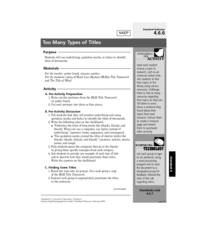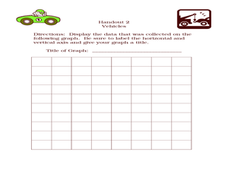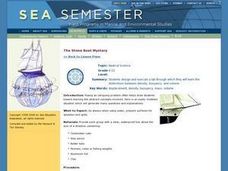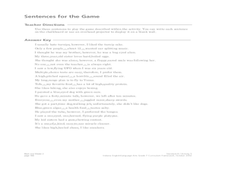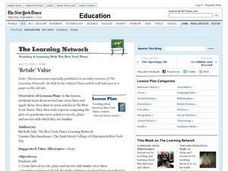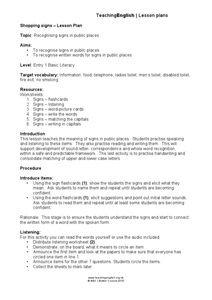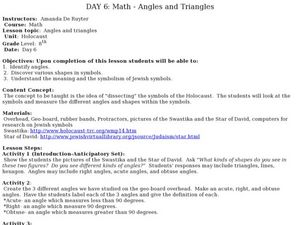Curated OER
Decision Making
"What pressures are there for teens to become sexually active?" The class writes anonymous responses on paper. The teacher then reads them aloud and the response is discussed by the group. They then examine their personal life goals and...
EngageNY
Solution Sets to Equations with Two Variables
Can an equation have an infinite number of solutions? Allow your class to discover the relationship between the input and output variables in a two-variable equation. Class members explore the concept through tables and graphs and...
John F. Kennedy Center
Folktale Theatre
Introduce your middle schoolers to a performance and movement activity that uses their favorite stories from fairytales and folklore. They practice basic acting skills, create dialogues with a partner, and then as guided practice,...
Curated OER
Fun With Rainfall Measurements
Demonstrate how rain is measured. Pupils will use a rain gauge to measure the amount of rainfall during one week. Then record the data and discuss the results.
Curated OER
Introduction to Myths, Fables, and Legends
Middle schoolers identify elements of myths, fables, and legends as they read an example of each. After reading an example of each type of story, they list elements from each. They compare and contrast these features by completing a...
School City of Hobart
Too Many Types Of Titles
Direct instruction on punctuation rules for titles is followed by collaborative practice in class. Two worksheets with aesthetically engaging graphic design provide practice. For 12 examples, small groups either underline, italicize, or...
Curated OER
The Daily Idiom
What is an idiom? Learners identify and read common idioms. They discuss what idioms are, and are given a black line master embedded in the plan that has 100 common idioms. Next, they complete "The Daily Idiom" worksheet, which is...
Roald Dahl
Matilda - Miss Trunchbull
How would you react to the Trunchbull if she was your teacher? This is the focus of an activity that has readers imagining and then acting out their reactions to various Trunchball scenarios in the story.
Curated OER
Show Me The Data!
Pupils create a bar graph. They will collect and organize data to turn into bar graphs. They create graphs for the favorite sports of the class, color of M&M's, and types of cars passing by.
EngageNY
Understanding Variability When Estimating a Population Proportion
Estimate the proportion in a population using sampling. The 20th installment in a series of 25 introduces how to determine proportions of categorical data within a population. Groups take random samples from a bag of cubes to determine...
Curated OER
The Stone Boat Mystery
Students design and execute a lab through which they study the distinctions between density, buoyancy, and volume.
Curated OER
"The Drum"
Second graders read and discuss the folktale "The Drum" from India. They also answer story comprehension questions, complete an adjectives and verb worksheet, and label a map of India. Students sequence events from the story and make...
University of Colorado
Are All Asteroids' Surfaces the Same Age?
There are more than 600,000 asteroids in our solar system. Pupils analyze images of two asteroids in order to determine if they are the same age. They count craters for each asteroid and compare numbers.
Curated OER
Punctuation Game
Students identify and use hyphens, dashes, and semicolons. Using teacher created cards, they correct sentences written on the board by the instructor.
Curated OER
Immigration Vocabulary
Eighth graders review immigration vocabulary. In this immigration lesson, 8th graders review vocabulary words using a SMART Board file and then take a quiz on the vocabulary words related to 19th century American immigration.
Curated OER
Juggling Slopes
Pupils identify the slope of a line. In this algebra lesson, students label slopes as positive, negative, zero or undefined. They use the slope formula to find the slope algebraically and graphically.
Curated OER
"Retale" Value: Exploring Plot Similarities in Fiction and Nonfiction Stories
Students explore seven basic story lines and apply these story lines to news articles in the New York Times. They write reports comparing the plot of a news article to novels, plays and movies with which they are familiar.
Curated OER
How Cell Phones Work
Fifth graders are introduced to the text, LITERACY LINE viewing the contents page. They review the definition of explanatory writing; discussing the features used and complete a KWL chart to identify what they already know about how a...
Curated OER
Graphing Systems of Equations - Word Problemsr
Students solve word problems which involve graphing systems of equations. After discussing methods of solving word problems, the teacher demonstrates how to solve problems which involve graphing. They work together, at their desks, and...
Curated OER
Martin Luther vs. John Calvin plus Jamestown
Eighth graders, using a Venn Diagram, compare and contrast Protestantism and Catholicism. At the beginning of class, they participate in a simulation to explore the beginnings of Jamestown and Roanoke. After discussion and taking...
Curated OER
Naviagational Tools
Fifth graders create a compass, with the help of written instructions and then write six sentences discussing how compasses work and why they are helpful. They discuss the different types of navigational tools and how they are helpful.
Curated OER
Recognizing Signs in Public Places
Students explore symbols by identifying public signage. In this public safety lesson, students view flashcards of everyday road, fire and food signs while discussing their function and purpose. Students record and identify road and...
Curated OER
Angles And Triangles
Seventh graders participate in a lesson that is focused upon the concepts of classifying different angles and triangles. They practice classifying triangles according to its kind that includes types of angles, congruence, and vertices....
Curated OER
Exploring Geometric Patterns and Relationships
Sixth graders explore different geographic relationships in like drawing lines, rays, and parallelograms. This lesson could be used for review because it covers more than one concept. The students should have prior knowledge.







